News Beat
News Beat reporting is an idrw.org initiative to let our Readers to report News Based on Actual facts but some how has not been reported in Main Stream Media .
SOURCE: RAUNAK KUNDE / NEWS BEAT / IDRW.ORG

The Indian Navy has embarked on a collaborative journey with the Defense Research and Development Organization (DRDO) to develop a Navy-specific variant of the Very Short Range Air Defence Systems (VSHORAD). This initiative seeks to equip smaller and medium-sized warships with an effective and relatively low-cost defence mechanism against a diverse array of aerial and surface threats.
The development of a Navy-specific VSHORAD system is a strategic move that acknowledges the evolving nature of threats in the air and on the water’s surface. With the ability to provide an additional layer of defence, this system promises to be a significant asset in the Navy’s arsenal.
Continue readingSOURCE: RAUNAK KUNDE / NEWS BEAT / IDRW.ORG

The Hellenic Air Force, an operator of Dassault Rafale and Mirage-2000 aircraft, is closely monitoring the integration process of the Astra Mk1 Beyond Visual Range (BVR) Missile with the Indian Air Force’s (IAF) Rafale fleet. This collaborative effort between the IAF and Dassault Aviation to integrate the Astra missile holds significance for Hellenic Air Force as it seeks to address the challenges posed by older MICA BVR missiles in its own fleet.
While the Rafales operated by both the Hellenic Air Force and the Indian Air Force are equipped with highly advanced Meteor BVR missiles that offer superior range and performance, there is a growing need for a more cost-effective BVR missile option to complement the expensive Meteor missiles. The Meteor missile is considered one of the top BVR missiles in the world, but its high cost has prompted many Rafale operators to explore more budget-friendly alternatives.
Continue readingSOURCE: RAUNAK KUNDE / NEWS BEAT / IDRW.ORG

Deputy Defence Minister Adly Zahari of Malaysia recently addressed concerns related to the ongoing crisis between Russia and Ukraine and its potential impact on the procurement of components and spare parts for the Sukhoi Su-30MKM aircraft used by the Royal Malaysian Air Force (RMAF). While acknowledging that the crisis has indirectly affected the supply chain, he outlined the steps that Malaysia is taking to ensure the continued operational readiness of its aircraft fleet.
The Sukhoi Su-30MKM aircraft has been a cornerstone of Malaysia’s air defence capabilities, and its operational continuity is of paramount importance. Adly Zahari highlighted the fact that, despite the challenges, Malaysia has established a contingency plan to ensure that the required spare parts and components for the aircraft are available when needed.
Continue readingSOURCE: RAUNAK KUNDE / NEWS BEAT / IDRW.ORG

Brazil’s foray into the realm of nuclear-powered attack submarines has garnered global attention, and the recent developments in its naval sector have stirred interest in India’s cutting-edge BrahMos-NG cruise missile.
The Brazilian state-owned naval company ICN (Itaguaí Construções Navais) has embarked on a monumental journey with the construction of Álvaro Alberto, Brazil’s first nuclear-powered attack submarine. This vessel, weighing 6,000 tons, draws inspiration from the French Scorpène class, a lineage known for its advanced capabilities. Set to be ready for induction by the turn of this decade, the Álvaro Alberto is poised to usher in a new era of naval warfare for Brazil.
Continue readingSOURCE: RAUNAK KUNDE / NEWS BEAT / IDRW.ORG
The Indian Air Force (IAF) is set to advance its long-pending initiative to acquire 114 Multi-Role Fighter Aircraft (MRFA), aimed at addressing strategic capability deficiencies and enhancing the nation’s aerial prowess. The acquisition process, which has been eagerly anticipated, is expected to gain traction as the IAF moves towards securing the Acceptance of Necessity (AoN) from the Defence Acquisition Council (DAC) in the coming months.
The anticipated AoN, a critical milestone in the procurement process, is expected to be obtained within the next two to three months. Following this, the IAF intends to release the Request for Proposal (RFP) for the acquisition of these advanced fighter aircraft. The program’s estimated cost is approximately $20 billion.
Continue readingSOURCE: RAUNAK KUNDE / NEWS BEAT / IDRW.ORG

In a stride towards innovation and excellence, Hindustan Aeronautics Ltd (HAL) is stepping into the realm of Artificial Intelligence (AI) to transform the landscape of aircraft maintenance. Chairman & Managing Director of HAL, CB Ananthakrishnan, recently unveiled the organization’s plans to develop AI-based products that promise to revolutionize aircraft maintenance through predictive technology.
Speaking at the Indian Institute of Management-Calcutta’s annual business conclave, Ananthakrishnan highlighted HAL’s groundbreaking efforts in harnessing AI for the betterment of aviation. The core focus lies in creating an AI-powered predictive maintenance system that will play a pivotal role in ensuring the health, efficiency, and longevity of aircraft.
Continue readingSOURCE: RAUNAK KUNDE / NEWS BEAT / IDRW.ORG
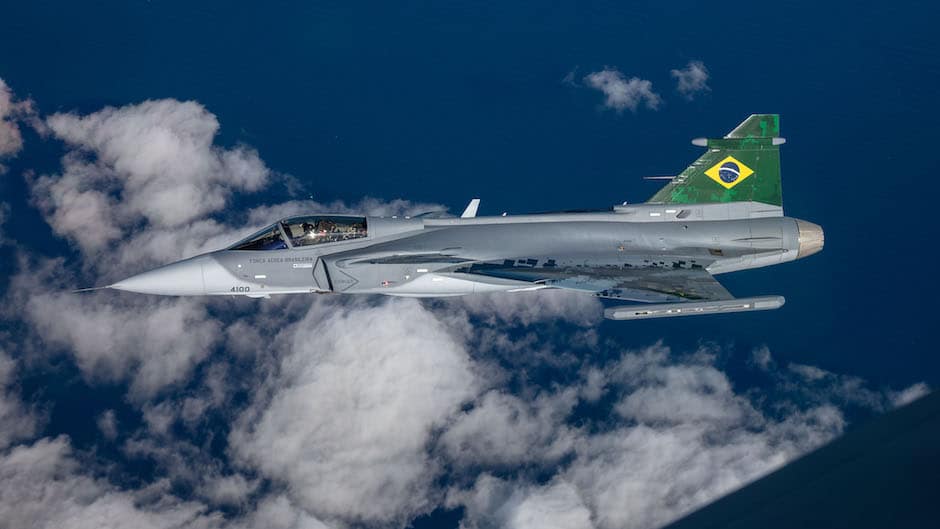
In a significant stride towards enhancing bilateral defence cooperation, the Chief of the Armed Forces from Brazil is set to embark on a visit to India this August. The visit aims to explore various Indian-made weapon systems that could bolster Brazil’s defence capabilities and reciprocally present Brazilian offerings to India. This strategic exchange holds the potential to strengthen the defence ties between the two nations, opening doors to collaborative endeavours that could redefine the future of defence technology.
One of the key areas of focus during this visit is the Brazilian Air Force’s fleet modernization, which has seen the recent induction of F-39E Gripen fighters procured from Sweden’s Saab Group. These new fighters are intended to replace Brazil’s ageing Northrop F?5EM and Dassault Mirage 2000C aircraft. While the F-39E Gripen fighters are equipped with Meteor Beyond-Visual-Range (BVR) missiles and IRIS-T Close Combat Missiles, the Brazilian Air Force is exploring avenues to enhance their capabilities further.
Continue readingSOURCE: RAUNAK KUNDE / NEWS BEAT / IDRW.ORG

In a significant stride towards modernizing its airborne capabilities, the Indian Air Force (IAF) is set to receive its first purpose-built Gallium Nitride (GaN) -based Active Electronically Scanned Array (AESA) radar. This state-of-the-art radar system is designed to meet the IAF’s requirements and replace the existing Russian-origin Hybrid N011M BARS Radar, with the first delivery anticipated in 2024. The development of the radar marks a collaborative effort between a private sector company and the Defense Research and Development Organisation (DRDO).
The GaN-based AESA radar is poised to revolutionize the IAF’s operational capabilities, enhancing both its tracking and search capabilities. The developmental trials for this cutting-edge radar system are scheduled to commence in 2025, utilizing two Su-30MKI fighter aircraft that will serve as testbeds for the program.
Continue readingSOURCE: RAUNAK KUNDE / NEWS BEAT / IDRW.ORG
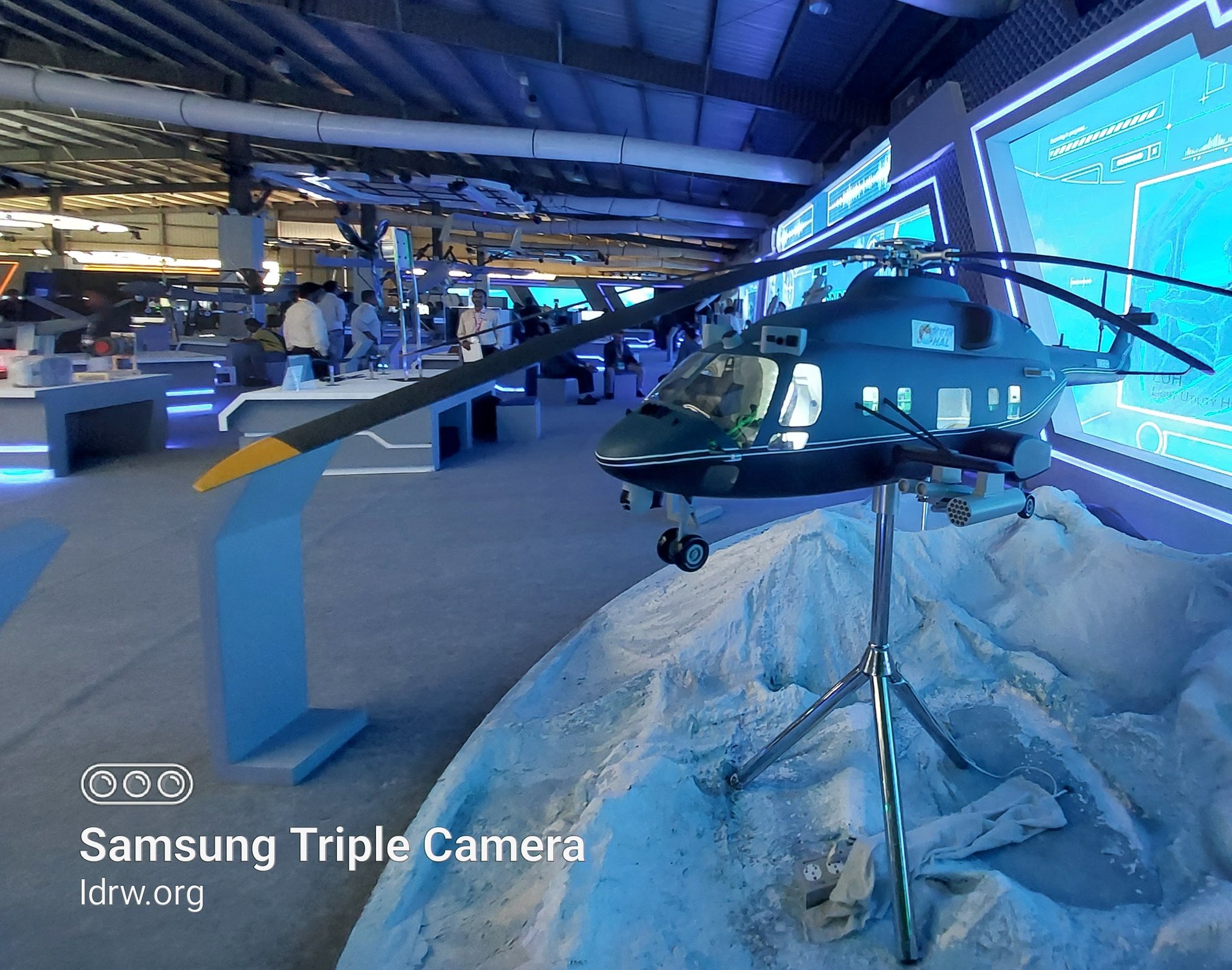
In a significant stride towards bolstering its indigenous aerospace capabilities, India has joined hands with France’s aerospace giant Safran to co-develop a state-of-the-art engine for the ambitious Indian Multi-Role Helicopter (IMRH) program. This strategic partnership, set to unfold over the next three months, marks a groundbreaking collaboration that promises to revolutionize India’s helicopter capabilities and contribute to the nation’s self-reliance in defence technology.
The IMRH program, a brainchild of India’s state-owned Hindustan Aeronautics Limited (HAL), is poised to take a giant leap forward with the development of a cutting-edge engine that will power the next generation of helicopters. The engine, envisioned to be a pinnacle of technological innovation, is targeted to be fully operational within the next 6-7 years, encompassing rigorous developmental testing phases.
Continue readingSOURCE: RAUNAK KUNDE / NEWS BEAT / IDRW.ORG
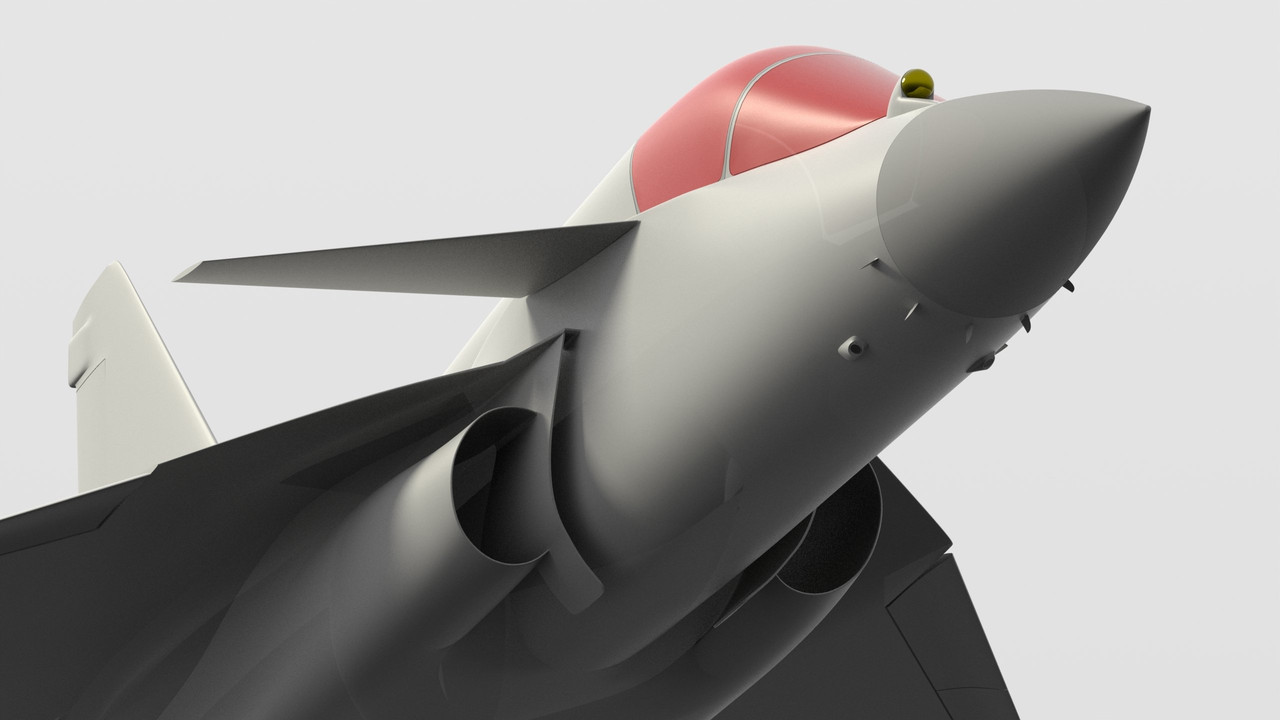
The AMCA program heralded as a cornerstone of India’s futuristic air dominance capabilities, is set to receive a locally designed and developed Radar nose cone. This crucial component is poised to incorporate stealth technology or low observability features, ensuring that the aircraft maintains a minimal radar cross-section (RCS) to evade detection and interception by adversaries.
A pivotal aspect of the Radar nose cone’s development is the integration of advanced materials and coatings that contribute to RCS reduction. A specially formulated radar-absorbent material (RAM) coating has been meticulously crafted to absorb electromagnetic waves across a wide spectrum of frequencies, without interfering with the primary radar’s frequency.
Continue readingSOURCE: RAUNAK KUNDE / NEWS BEAT / IDRW.ORG

In a strategic move to bolster the defence capabilities of its Armoured Fighting Vehicle fleet, the Indian Army is taking proactive steps to fortify its assets against emerging threats. Spearheading this critical initiative is the Army Design Bureau (ADB), working in close collaboration with industry leaders, academic institutions, Defense Public Sector Undertakings, and the Defense Research and Development Organisation (DRDO).
With a spotlight on Armoured Fighting Vehicle Protection and Counter Drone systems, the ADB is driving forward a comprehensive approach to safeguarding main battle tanks and future combat vehicles against evolving challenges.
Continue readingSOURCE: RAUNAK KUNDE / NEWS BEAT / IDRW.ORG
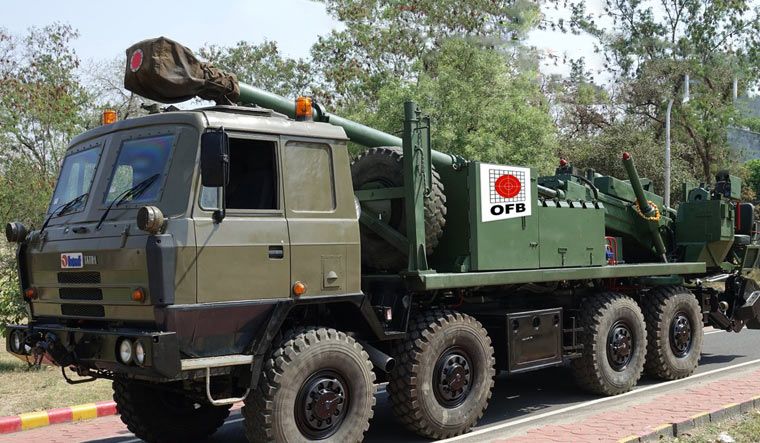
Advanced Weapons And Equipment India LTD (AWEIL) has issued an Expression of Interest (EOI) inviting responses from potential Strategic Partners who are Indian Original Equipment Manufacturers (OEMs). The objective of this collaboration is to co-develop, co-produce, co-brand, and supply a cutting-edge 155mm Mounted Gun System to the Indian Army (IA), Ministry of Defence (MoD), and other entitled entities, including potential export opportunities.
AWEIL’s initiative aligns with the government’s push for indigenous defence production and technological innovation. The EOI aims to identify a long-term partner who will work in conjunction with AWEIL to design, develop, and manufacture the 155mm Mounted Gun System, a vital asset for the nation’s defence capabilities.
Continue readingSOURCE: RAUNAK KUNDE / NEWS BEAT / IDRW.ORG
In the realm of modern aerial warfare, the race to possess cutting-edge beyond-visual-range air-to-air missiles (BVRAAMs) is an essential facet for maintaining superiority in the skies. India, with its thriving defence research and development capabilities, is all set to revolutionize this arena with the forthcoming Astra Mk2, a dual-pulse motor BVRAAM that promises both exceptional range and cost-effectiveness.
The Astra Mk2, set to be a game-changer in the field of aerial combat, boasts an impressive range of over 160km. However, what sets it apart is its striking affordability when compared to the European Meteor missiles, which are presently integrated into the Rafale fighter jets as part of a 2016 deal with French manufacturer Dassault. The Meteor missiles, renowned for their extended range of over 200km and unmatched “No Escape Zone” (NEZ), come with a hefty price tag of over 25 crore rupees per unit, making them a premium choice available to only a limited number of fighter jets.
Continue readingSOURCE: RAUNAK KUNDE / NEWS BEAT / IDRW.ORG
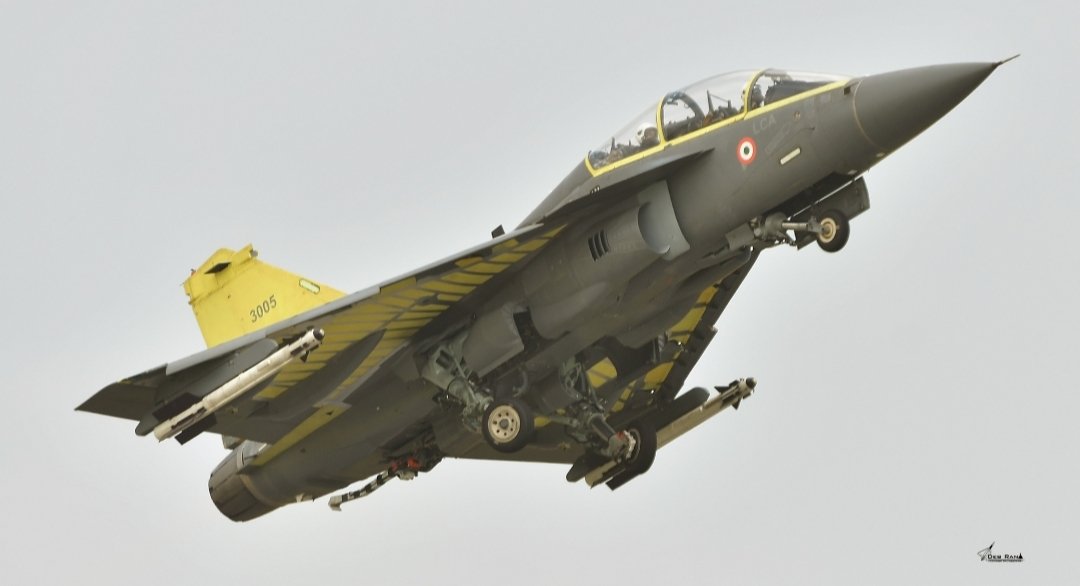
In a significant achievement for India’s indigenous defense capabilities, the Naval variant of the Light Combat Aircraft (LCA), designated NP5, successfully completed its maiden flight at the HAL airport. The Defence Research and Development Organisation (DRDO) announced the successful flight, marking a crucial step forward in the development of the LCA naval trainer and its potential role in the upcoming Twin Engine Deck-Based Fighter (TEDBF) program of the Indian Navy.
The NP5 prototype took to the skies under the skillful piloting of Captain Amit Kawade (Indian Navy) in the cockpit, with Wing Commander Siddarth Singh (Retired) accompanying in the rear. The aircraft remained airborne for a duration of 57 minutes, during which all parameters were reported to be normal.
Continue readingSOURCE: RAUNAK KUNDE / NEWS BEAT / IDRW.ORG
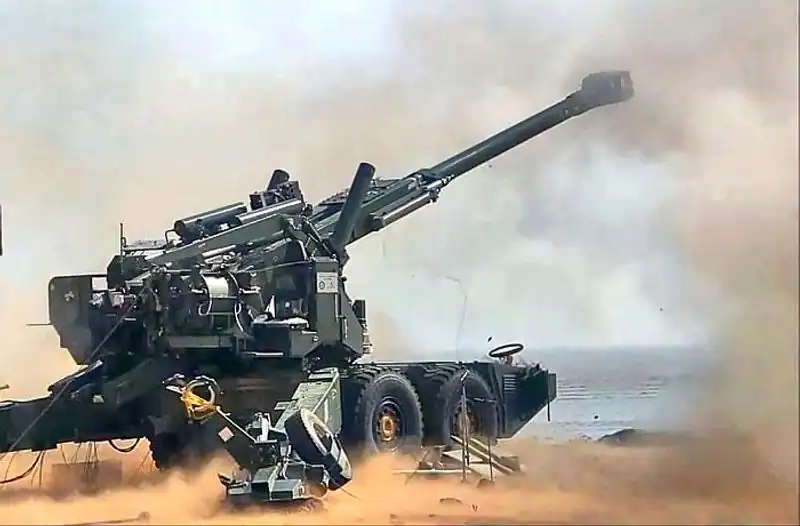
Officials from the Philippines have embarked on a journey of exploration into India’s burgeoning defence industry, with a particular focus on Indian-made artillery systems. The Philippines, a nation keen on enhancing its defence capabilities, has expressed interest in examining the products and technologies offered by Indian defence firms, including Kalyani Strategic Systems.
Reports suggest that a delegation from the Philippines has undertaken visits to several Indian defence companies, with a significant emphasis on exploring advanced artillery systems. The visit to Kalyani Strategic Systems, a subsidiary of Bharat Forge, is particularly noteworthy in this regard. The Philippine authorities are reportedly evaluating various artillery solutions offered by the company to potentially address their defence requirements.
Continue reading